From Konotop to the Russian border, it’s barely seventy kilometres. since the war’s onset in 2014, the city has been in the grip of this proximity, serving as a constant reminder of looming danger. while active combat has largely bypassed the area over the years, the threat still hovers—almost nightly—whether in the form of missiles or shahed drones. Remarkably, the townspeople have grown used to this unnerving reality, so much so that until recently, many scarcely paid it any mind.
At the start of the full-scale war, Konotop found itself in the occupation zone, though it never fell completely. The city endured a month and a half under siege. Supplies were scarce, with stores running empty and food only arriving through makeshift routes. “What saved us was our communication with other communities,” explains Konotop’s deputy mayor, Svitlana Samsonenko. “We stayed connected with Ivano-Frankivsk, Ternopil, and Khmelnytskyi and even received humanitarian aid from Odesa. Without that, I don’t know how we would’ve managed.”
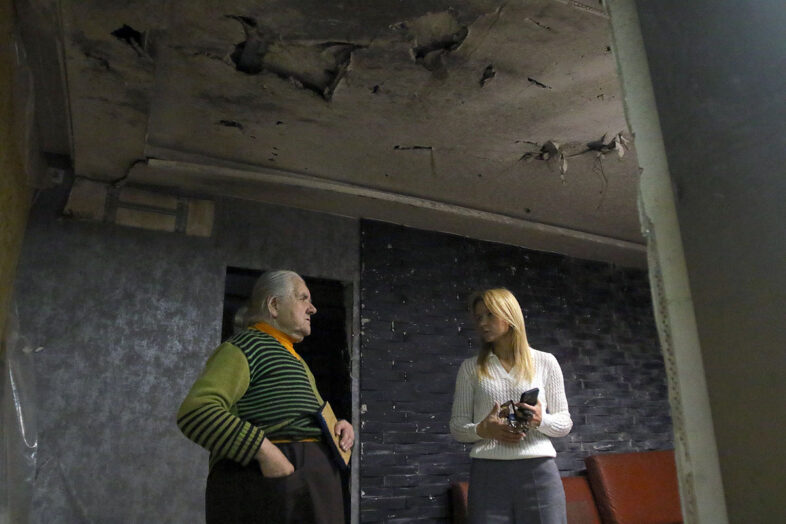
Photo: Roman Malko
The Russians attempted to breach the city, but they were pushed back before reaching Konotop and eventually retreated. A few days later, they sent a group for ‘negotiations’—arriving in an APC and a UAZ. The leading officer, introducing himself as Lieutenant Colonel Gryzlov, demanded that Mayor Artem Semenikhin surrender, claiming authority over the region. “We’re the new power here,” Gryzlov reportedly said.
“I’ve been appointed the commandant of Slobozhanshchyna,” the Russian added. The mayor stood his ground, declaring there would be no surrender. “The city is armed,” he told the officer in Ukrainian, refusing to switch to Russian. The refusal visibly enraged the Russians, who left the city hall holding grenades with their pins removed.
As it turned out later, the so-called “commandant of Slobozhanshchyna,” Gryzlov, was actually named Petrunin, a veteran of Chechnya and Syria. His war experience, however, met an ignominious end near Konotop. On March 29, just weeks after his brazen demands, Ukrainian soldiers destroyed Petrunin along with his UAZ, leaving behind little more than charred remains. Konotop, it seems, has been an exceptionally unlucky place for the Russians. Besieged at least twice, the city withstood both attempts, each ending in Russian defeat.
The first major strike on Konotop occurred in March 2023, near a service station on the city’s outskirts. The blast shattered windows in nearby buildings, but repairs were swift. Windows were replaced, the station was fixed, and the incident faded from memory. Then, on September 3, 2024, an X-59 missile struck intended for the hospital. It clipped a tree and detonated prematurely over a ravine. A nearby house bore the brunt, losing its roof, doors, windows, and interior walls. The home remains uninhabitable, and its residents are still displaced. Remarkably, no one was killed in the blast. Locals joke that there must have been some divine intervention, or perhaps, as they like to believe, the witches of Konotop were watching over them.
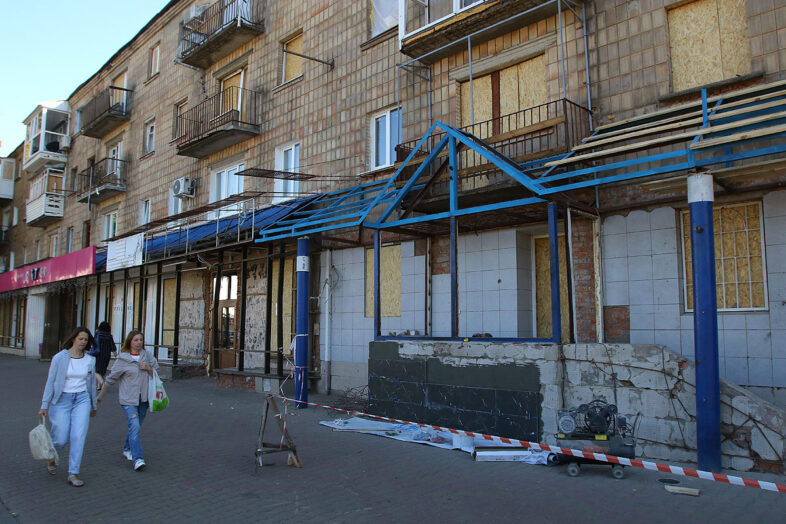
Photo: Roman Malko
As it turned out, that was just the beginning. On the night of September 11-12, Konotop came under a massive drone assault. Six Shahed drones targeted the city, striking civilian infrastructure and residential areas. “Maybe they were trying to scare us; maybe it was meant to have a psychological impact,” says Svitlana Samsonenko. “But there are no strategic targets in the city centre at all.”
Miraculously, there were no fatalities at first. About fifteen people were injured, three of whom were hospitalised, one in critical condition. Among those trying to help was 42-year-old Denys Horokh. After the first explosion, he got into his car to rush to the scene and assist his neighbours, but one of the Shahed drones detonated near his vehicle, fatally wounding him. Doctors fought to save Denys’s life for three days, but despite their efforts, he didn’t survive.
That night, a Shahed drone crashed straight into the living room of 84-year-old Baba [‘grandma’ – ed.] Raya, obliterating the balcony, shattering three windows, and wrecking her furniture. The fact that Raisa Pavlivna survived feels nothing short of miraculous. She had been sitting on her couch with her cat, Markiz, in her arms, watching TV. They were showing animals, and the cat, she says, was engrossed in the screen. Then, out of nowhere, Markiz jumped to the floor, darting around the room, howling and meowing frantically.
“I said, Markiz, have you gone mad?” she recalls. “What do you want?” The cat dashed to the balcony, then back into the room, meowing non-stop. “When the first blast hit, he jumped back into my arms, clinging to me. Then there was another blast, and flames shot in from there,” she gestures toward the balcony. “Did I drop the cat? I don’t even know. I ran to the door, but it was gone. I just stood there, and the flames chased me…”
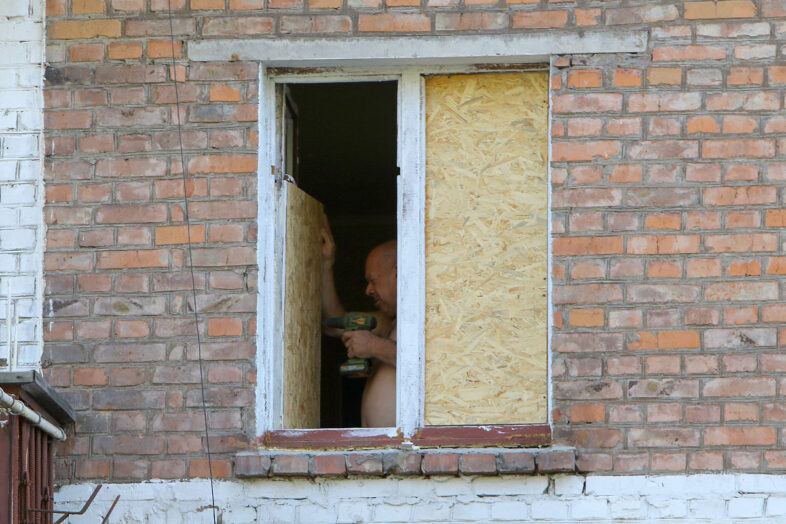
Photo: Roman Malko
The woman ran onto the stairwell, but the smoke was so thick she couldn’t escape the building. Two men pulled her outside, but she quickly remembered her cat and phone and tried to rush back inside. They wouldn’t let her. At dawn, she returned to her apartment. Everything was charred black, debris littered the floor, the ceiling had burned away, a radiator lay in the middle of the room, the balcony railings were ripped off, and one of the walls was completely gone. Despite the devastation, Raisa Pavlivna—shaken but unharmed—refuses to leave, even though she has somewhere she could go. She insists it’s better to stay home with her cat. Now, she hopes some kind souls will help her repair the windows and balcony door before winter sets in, and then, somehow, she’ll make do.
“I had an icon in my pocket. It was God who saved me,” she says, pulling out a small blackened board, the faint image of Jesus just visible beneath a layer of soot. “It’s probably around 300 years old. It used to hang in a church, but then there was war, revolution, and during a fire, people took it.” The icon had been passed down to Baba Raya from her aunt. “When the bombing started,” she adds, “I kept it in my pocket all the time.”
That night, it wasn’t just her apartment that was destroyed; an entire section of her building was damaged. Three flats were entirely gutted by fire, and one was partially burned. Her downstairs neighbour, Serhiy, lost an interior wall. He says he only survived because he had stepped outside after hearing the first explosion. The second blast, just minutes later, obliterated his apartment.
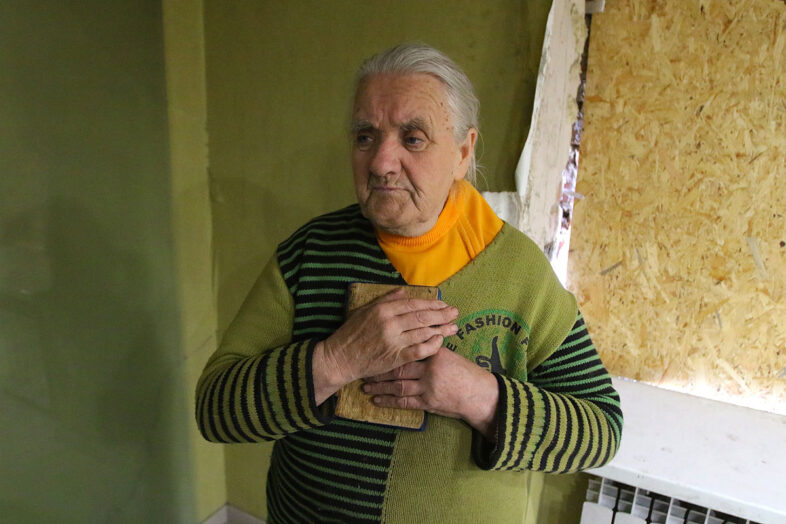
Photo: Roman Malko
“Now, things don’t look as terrifying as they did right after the shelling,” says Svitlana Samsonenko as she walks me through Konotop. “Local business owners wasted no time. From day one, they were clearing debris and starting repairs. There’s even a shop where renovations are already complete. The housing authorities jumped in quickly, too, clearing and cleaning the area.
And the residents—well, even amidst ongoing shelling, they’re out there with brooms and dustpans, tidying up. Some are even saying, ‘We don’t need anything from the state; we’ll restore everything ourselves.'”
“Here, the tram tracks took a hit,” Svitlana says, pointing to a freshly filled crater. “The tracks were damaged, but the transport department managed to repair them on their own. Over there,” she continues, gesturing towards a spot nearby, “that’s where Denys Horokh was when he suffered fatal burns. And this building—it’s the most heavily damaged. The local budget has set aside 250,000 for an expert assessment…”
The extent of the destruction from the shelling on the night of September 11-12, as detailed by Konotop’s deputy mayor, is staggering. “Thirty-two apartment buildings were damaged. Most had their windows blown out, but three lost their roofs—two partially and one entirely. Six educational institutions were affected, including three lyceums, two kindergartens, and an extracurricular facility, the Centre for Youth Creativity. Additionally, ten hospital buildings sustained damage, with the windows blown out completely in two of them: the therapeutic department and the polyclinic. The Social Welfare Office and the Territorial Centre for Social Services for Vulnerable Populations were also hit.”
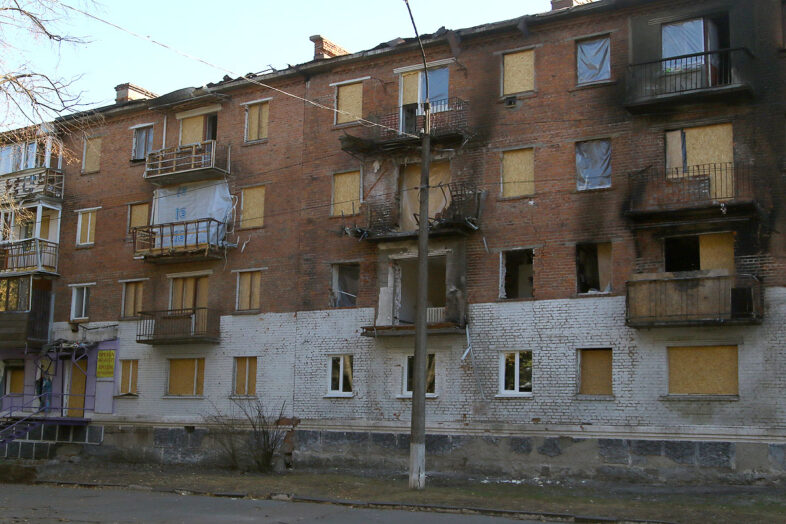
Photo: Roman Malko
Behind these dry statistics lies a financial burden the city budget simply cannot shoulder. The hospital alone requires the replacement of 270 windows, the lyceum about 80, and the kindergarten for children with disabilities needs 25. Add to that the cost of repairing doors, partitions, external and internal wall damage, fences, and more.
Local authorities, meanwhile, can’t afford to ignore the needs of ordinary citizens. Typically, people file requests for assistance to restore damaged homes through the government-run Diia digital services app and, after some time, receive the necessary funds in their accounts. But the system doesn’t always work. Some residents haven’t formally inherited their properties, others aren’t the legal owners, and in many cases, the actual owners are unreachable. In such instances, the city seeks help from charitable organisations, submitting specific requests, primarily for window replacement—a small but essential contribution.
After the collapse of the Soviet Union, the large enterprises that once sustained Konotop shut down. Today, the city is supported by small businesses and local trade, with major investors reluctant to enter due to its proximity to Russia. This economic stagnation has led to a steady decline in the population, from what was once a city of 100,000 to around 80,000 before the war.
The war has only hastened this exodus, with residents fleeing the constant threat of bombardment. Yet, Konotop has seen the arrival of around 3,000 internally displaced persons from the eastern Sumy region, where enemy shelling is relentless. While Konotop may be relatively calmer, the pressing question remains: where will all these people live?
“Since the personal income tax for security forces was eliminated, our city budget revenue has sharply declined,” says Svitlana Samsonenko. “We are now grappling with a significant shortfall in salaries for municipal enterprises.” In the days when PIT was still in effect, the city had the financial resources not only to tackle many pressing issues but also to extend vital assistance to the military. Svitlana herself orchestrated the procurement of vehicles from Europe, ensuring they were delivered to military units along with guarantees for ongoing maintenance and repairs. Now, however, such initiatives have become increasingly challenging.
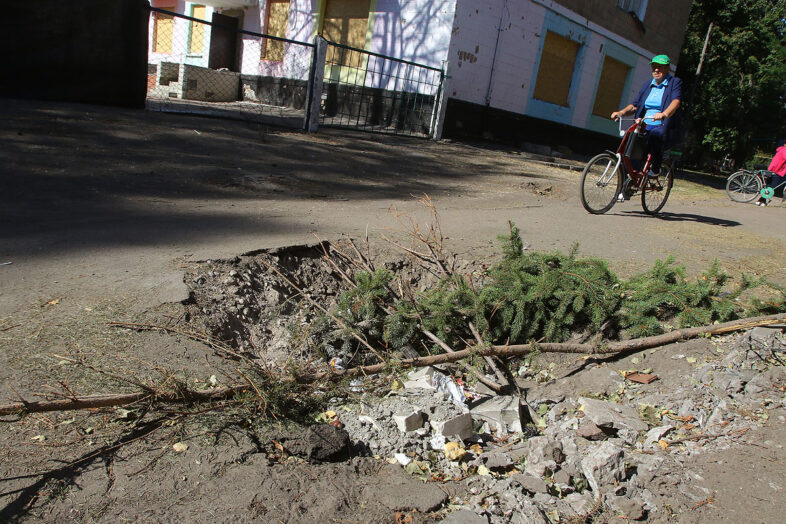
Photo: Roman Malko
And yet, the city somehow perseveres, primarily due to the generous contributions of charities and donors. These organisations not only provide window replacements but also play a vital role in restoring the central park and supporting various community projects. The trams now running in Konotop have been sourced from Warsaw and Ostrava, while the buses also hail from Ostrava. Additionally, the loaders, graders, and excavators used by municipal services were imported from Europe. Although the equipment is used rather than new, it represents a significant addition, filling a void that previously existed.
Much of this progress can be attributed to Mayor Artem Semenikhin, who tirelessly travels to forge new partnerships and secure vital resources. His efforts have led to an array of collaborators who are helping the city navigate these trying times. During my visit to Konotop, the mayor was away on a business trip, a journey he had been planning for some time. However, the tragic events of September 12 compelled him to adjust his schedule.
He called his deputy mid-conversation, inquiring about the situation in the city. “I’m in Austria at a facility that produces wood chips,” he said, noting his interest in their experience with electricity production. “We need a cogeneration unit,” he explained, “one that can produce at least 450 to 500 kilowatts. This would cover the electricity needs of at least one of our three traction substations.”
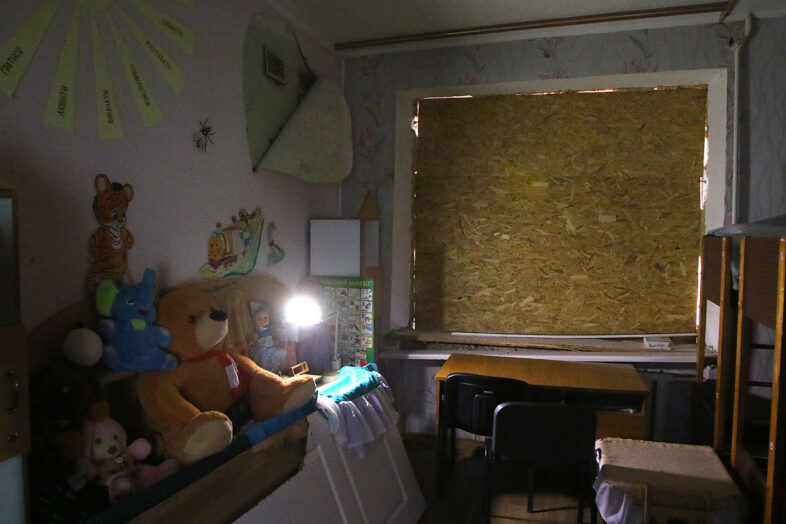
Photo: Roman Malko
With this setup, he envisions providing electricity in the evenings for the trams, the hospital, and street lighting. “It would be immensely beneficial,” he added, emphasising the financial aspect: “The cost would be just 2 to 3 hryvnias per kilowatt, compared to over 10 hryvnias from the grid. This is especially critical now, given the instability of the grids. We’re experiencing constant fluctuations due to the Russian strikes on our energy infrastructure, making it increasingly difficult for residents.”
In Konotop, survival challenges are being met with a serious approach. The city has acquired modular boiler houses, ready to serve as alternatives to existing facilities if necessary. Solar panels are being installed in the central district hospital alongside efforts to modernise its thermal system. Authorities have also stocked up on generators and fuel to sustain operations for at least three days. To maintain communication among municipal enterprises, they have invested in radios to ensure connectivity in case regular communication systems fail.
“At the beginning of the war, we faced a complete communication breakdown; there was nothing,” recalls the deputy mayor. “We resorted to travelling and sending messengers back and forth, desperately trying to locate each other. It became clear that we needed radios.”
Yet, life in the city continues unabated. Remarkably, just a day after the shelling, mothers were already out walking with their children on the streets, and operations resumed at the kindergarten that had been shelled. “What other choice do we have?” parents express, noting the urgent need to work. “Seventy per cent of our parents are hospital workers,” explains Valentyna Tovkach, head of the kindergarten. “You can imagine the situation for doctors; they can’t take their children with them when they attend to patients.”
The Orlyatko kindergarten is nestled on the ground floor of a residential building, its entrance framed by a large playground adorned with an array of colourful and whimsical decorations. “Who created such beauty?” I ask the head of the kindergarten. “It’s all our staff,” she replies proudly, gesturing to the vibrant space. “We use discarded materials that would otherwise go to waste. A kindergarten should be bright and inviting. Of course, we would love for our repairs to be more modern, but we make do with what we have. We patch things up, fix, and paint—that’s our job. We would really love to have a modular shelter; we could build it right here, and that would be wonderful. Please write about this.”
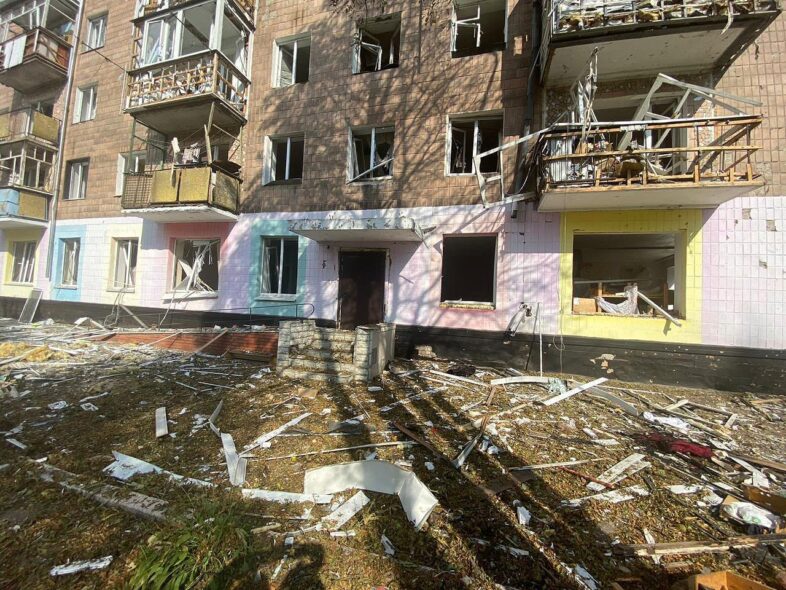
Photo: Roman Malko
A significant concern looms over the kindergarten: the availability of safe shelters. The facility has only a rudimentary shelter capable of accommodating 25 people. In response, the staff have coordinated arrangements for some children to take refuge in the nearby central district hospital, which meets safety standards. Although this option is close by, the urgency of access cannot be overstated; a rocket launched from Russia can reach the city in less than a minute, making adequate shelter essential for the children’s safety.
This lack of bomb shelters has forced all students in the city to transition to online learning. “Our children want to learn, but with the constant air raid alerts, we can’t even permit a blended learning format,” explains Svitlana Samsonenko. “The Sumy Regional State Administration’s Defense Council has mandated that children can only attend in-person classes if there is a radiation shelter available. Unfortunately, we have only two such shelters in our schools.” Previously, there were requirements for shelters to be present at all educational facilities, and the community engaged donors to help construct these essential spaces. Now, with this new ruling in place, students from second or third grade may adapt somewhat to online learning, but first graders are struggling. “Mothers are constantly reaching out, saying that it’s hard for their children in the first grade,” she adds, highlighting the challenges faced by the youngest students in this difficult time.

